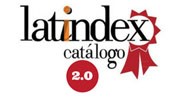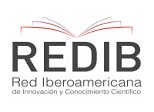Rural Education in San Lorenzo, its Possibilities and Limitations
DOI:
https://doi.org/10.69890/hallazgos21.v6i3.535Keywords:
rural education;, innovation;, educational quality.Abstract
The objective of this research was to analyze the limitations and possibilities that rural schools in the San Lorenzo canton, Esmeraldas province have regarding educational innovation and the improvement of the quality of education. For this, a descriptive study is carried out within the framework of the qualitative paradigm and the interpretive approach. Through the application of interviews to key informants and the development of a focus group with ten teachers from the sector, the experiences and reflections that they have regarding the educational reality of rural schools, their limitations and possibilities are analyzed. The results show the existence of numerous limitations, but also of possibilities that must be exploited by rural schools. It is concluded that there is a need to establish educational policies that converge in a comprehensive quality of rural education in line with the fourth objective of sustainable development.
References
Bernal, J. L. (2009). Luces y sombras en la escuela rural. Zaragoza: UNIZAR. http://didac.unizar.es/jlbernal/Asignaturas_sin_docencia/pdf/40_escrural.pdf
Boix, R. (2011). ¿Qué queda de la escuela rural? Algunas reflexiones sobre la realidad pedagógica del aula multigrado. Profesorado. Revista de Curriculum y Formación de profesorado, 15(2), 13-23.https://www.redalyc.org/pdf/567/56719129002.pdf
Calderón (2015). Situación de la Educación Rural en Ecuador. Informe de asistencia técnica, Quito: Centro latinoamericano de desarrollo rural, 2015, 53.
Hernández, R. (2014) Metodología de la Investigación (6ta edición): Mc Graw Hill Education. http://observatorio.epacartagena.gov.co/wp-content/uploads/2017/08/metodologia-de-la-investigacion-sexta-edicion.compressed.pdf
Herrera, L., & Buitrago, R. E. (2015). Educación Rural en Boyacá, Fortalezas y debilidades desde la Perspectiva del profesorado. Praxis & Saber, 6(12), 169-190. https://revistas.uptc.edu.co/index.php/praxis_saber/article/view/3768/3550
Instituto Nacional de Evaluación Educativa (INEVAL). (2020) Informe de resultados evaluación costa 2019-2020. https://www.evaluacion.gob.ec/wp-content/uploads/downloads/2020/06/24.1.-DAGI_SBAC20-InformeCosta2019-2020_20200618.pdf
Ministerio de Educación (2019). Archivo Maestro de las Instituciones Educativas 2018-2019. https://educacion.gob.ec/amie/
Mc Millan, J., & Schumacher, S. (2005). Investigación educativa. Una introducción conceptual. https://scholar.google.com.cu/scholar?q=mcmillan+%26+schumacher+(2005)&hl=es&as_sdt=0&as_vis=1&oi=scholart#d=gs_qabs&u=%23p%3DjBhYxG9u_J0J
Organización de Naciones Unidas. (2015) La agenda para el desarrollo sostenible. https://www.un.org/sustainabledevelopment/es/development-agenda/
Peirano, C., Estévez, S. P., & Astorga, M. I. (2015). Educación rural: oportunidades para la innovación. Cuadernos de investigación educativa, 6(1). http://www.scielo.edu.uy/scielo.php?script=sci_abstract&pid=S1688-93042015000100004&lng=es&nrm=iso
Secretaría Nacional de Planificación y Desarrollo (Senplades). (2017) Plan Nacional de Desarrollo 2017-2021. Toda una vida. http://www.planificacion.gob.ec/wp-content/uploads/downloads/2017/10/PNBV-26-OCT FINAL_0K.compressed1.pdf
Vera Rojas, M. del P. (2018). Reformas educativas en Ecuador. Revista Boletín Redipe, 4(8), 17–34. https://revista.redipe.org/index.php/1/article/view/360
Published
How to Cite
Issue
Section
License
Los artículos enviados a la Revista Científica Hallazgos21 deberán ser totalmente originales e inéditos.
Los autores son los responsables de los textos y las imágenes incluidas en los artículos y no necesariamente reflejan el pensamiento de la editorial o de la Pontificia Universidad Católica del Ecuador, Sede Esmeraldas (PUCESE).
Los autores disponen cederle a la Revista Científica Hallazgos21 todos los derechos inherentes para la edición, publicación y distribución o divulgación del mismo.
Se autoriza a las revistas firmantes de los acuerdos de Encuentros de Revistas Latinoamericanas para reproducir en parte o totalmente los artículos con la sola mención de la fuente claramente señalada.







